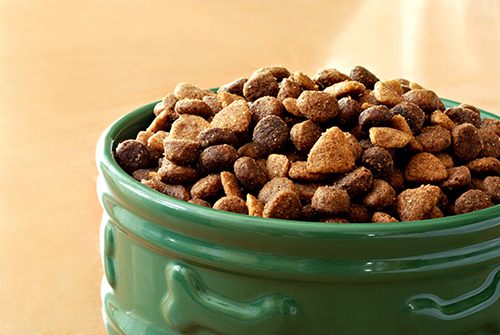Ever wonder what the ingredient section of your pet food bag really means? Maybe you think you are getting a good food for your pet, but still question if it is the best choice? Dr. Ava Frick goes into detail on how choosing the right selection of food for your dog or cat is the beginning of a healthy life.
Everything in health and wellness has a nutritional component. The right balance of vitamins, minerals and whole food components makes all the difference between optimal living and various states of disease. Dogs are carnivore-biased omnivores, which means while they are designed for digesting meat and veggies (in addition to getting B vitamins from herbivorous feces), they tend to do best with a carnivore-type diet. Cats are obligate carnivores. That means meat, meat, meat.
 Start your puppy or kitten out on grain-free diets and life will have a good beginning. Grain-free means no rice, wheat, soy, gluten, barley, or corn as protein sources. While this may appear a little more expensive than cheap grain diets, you will feed less (almost half) and that means less fecal volume for whoever is walking or has yard patrol. The cat litter box will be less odiferous too because you are feeding what the body is designed to utilize.
Start your puppy or kitten out on grain-free diets and life will have a good beginning. Grain-free means no rice, wheat, soy, gluten, barley, or corn as protein sources. While this may appear a little more expensive than cheap grain diets, you will feed less (almost half) and that means less fecal volume for whoever is walking or has yard patrol. The cat litter box will be less odiferous too because you are feeding what the body is designed to utilize.
Dogs digest fats first, carbohydrates second, and protein third. They need a good balance of protein and fats with minimal (only 15%) carbs in their diet. For adult pets who have been on a grain-laden diet begin the transition as soon as possible to avoid the onset of degenerative diseases such as diabetes, obesity, arthritis, colitis, thyroid and immune system weakness, and chronic infections. When reading the package label the first 4-5 ingredients posted will be where the protein in the diet originates. This should be meat, meat meal, organs, or meat-by-product (stomach, intestine, cartilage, and things the animal would eat if killing and consuming a carcass). Following the protein sources on the label will be vegetables, for whole food nutrients and starch, and fruits for valuable antioxidants and vitamins. Grain-free diets are available commercially in dry kibble, dehydrated, canned, and raw formulas.
If the pet has chronic inflammation it is best to try to avoid dry kibble. Dry foods are processed at high temperatures and when eaten burn fast in the body. This creates a log-on-the-campfire effect, raising the internal body heat very briefly, stimulating inflammation and then dropping off, leaving the pet hungry again. Ever wonder why your dog or cat inhales the dry food acting like they really like it? Now you know why; they are famished, and will be again shortly after the meal.
Your pets are a result and culmination of everything that goes into and on their bodies. Taking precaution to purchase the safest products is a great start to a healthier body. The sooner you improve all facets of what they are exposed to the less you will be faced with dis-ease and the medical expenses of treating disease, instead of doing fun things for them and with them. Enjoy each day of their life and show them love that includes what’s in the food dish.
Ava Frick, DVM, CAC
Pet Rehab & Pain Clinic
Chesterfield, MO
www.animalrehabstlouis.com


 Translate
Translate